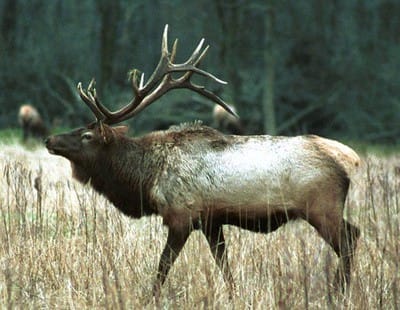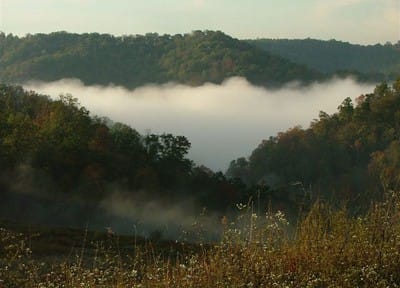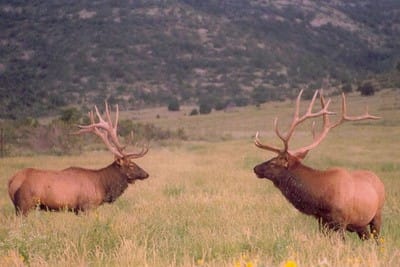Submitted By:
Photos courtesy of the Rocky Mountain Elk Foundation

Those of us in the 21st century can hardly imagine what things were really like when those hardy individuals commonly known as long hunters ventured onto the frontier of Tennessee and Kentucky in the mid 1700s. We dress in buckskin leggings and tote flintlocks today for nostalgia, for the opportunity to briefly experience life as it was then, to step away momentarily from the frills of modern society. Still, we can’t truly experience what those early visitors did.
Many of those travelers from the 18thcentury gained celebrity—Daniel Boone, Christopher Gist, Casper Mansker. And there were others, adventurous spirits all. They walked off into the unknown to hunt, map new territory, and establish settlements. While there they encountered bear, bison, cougars, deer, and elk. It surely must have been a glorious time for those with a propensity for wanderlust.
These explorers, however, were perhaps too successful. Following them was development, and this led to a decline in the wildness these people cherished. For the most part the bison were gone and elk were pushed westward. And in later years surface mining was practiced in countless areas that were once wilderness. The picture became bleak, dismal. But, it has not remained that way. In recent years there has been a positive reversal to the losses sustained. Kentucky is a shining example.
Guidelines were established for the reclaiming of decimated lands that were surface mined. This brought about an effort to return these to viable tracts that were both aesthetically pleasing and productive. Following a great deal of work that is ongoing in some areas, this was done. Those bare hillsides were transformed. Lush meadows and impressive woodlands gradually returned. And then came the elk.

The Kentucky elk restoration study began in 1995-96. This study was made up of two parts: a biological/habitat study and a sociological study. Both were funded by the Rocky Mountain Elk Foundation. Indications from the studies showed that elk would do well on remote grasslands created by the reclaimed lands in southeastern Kentucky. As a result, seven elk were released in 1997. A total were of 1,500 were eventually transplanted from several Rocky Mountain states. From that point forward, success has been the norm.
Today the number of wild elk in the 16-county elk zone of Kentucky stands at approximately 10,000. This gives Southeastern Kentucky the envious title of having more elk than any other state east of the Rocky Mountains and has led to Knott County’s designation as elk capital of the East. And the work has not stopped. The Elk Foundation’s Appalachian Wildlife Initiative continues to fund habitat improvements in Kentucky’s elk country.
One important statistic regarding Kentucky elk is that calf mortality is quite low, approximately 4 percent. This is due in part to the lack of natural predators. Additionally, the high levels of nutrition in the habitat must be credited. There is ample food, and this generally leads to an improvement in the overall health of the herd. Nutrition doesn’t reduce only calf mortality, it also transfers to the adults of the herd. Kentucky elk are reported to be larger than their western counterparts. Records show that some of the harvested bulls are coming in near the 400 B&C mark.
Yes, there is hunting available. In 2008 there were 400 permits issued by lottery, 300 for cows and 100 for bulls. Approximately 25 additional permits facilitated by the state for use by conservation organizations as fund raisers and for landowners who place their property in wildlife management area status with public access were issued. The one-week bull rifle season falls in early October and the one-week cow season is in December. The archery season for bulls and cows goes from early October through mid January.

From those days of the long hunters to these days of the 21st century, a great many changes have taken place. Not all have been positive as regarding wildlife. But the success of Kentucky elk is an exception. The elk are back, the future is bright, and the bugle of bull elk is now becoming a regular occurrence is some parts of this animal’s original territory. Celebration is in order.
For additional information visit the Rocky Mountain Elk Foundation’s web site:www.rmef.org. For information regarding viewing elk in Kentucky, visit www.trailsrus.com and click on the elk.



